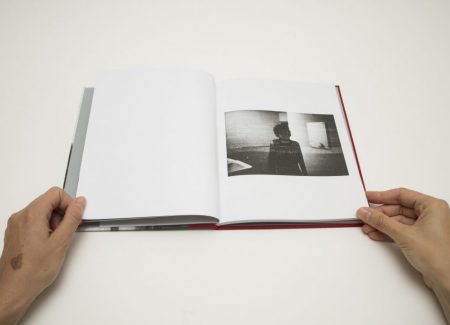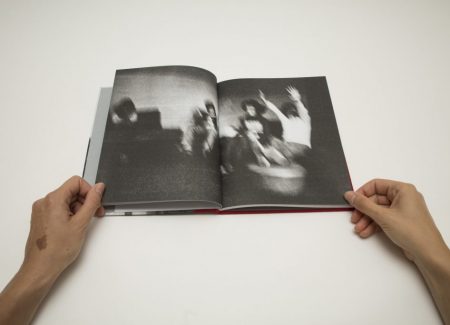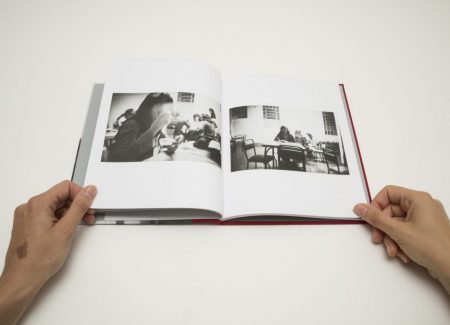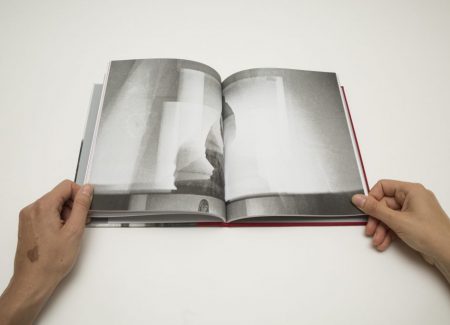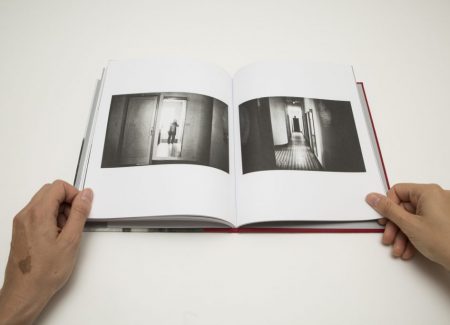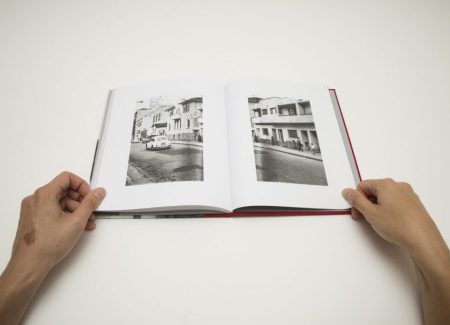JTF (just the facts): Published by Olhavê in 2016 (here). Hardcover, 80 pages, with 46 black and white photographs. Includes a text by Georgia Quintas. In an edition of 500. Edited by Georgia Quintas and Alexandre Belem and designed by Fernando Sciarra. (Cover and spread shots below.)
Comments/Context: 1978 brings together a series of photographs taken by the Brazilian artist Gabriela Oliveira 38 years ago, when she was 17 years old and just discovering photography. That was the year she moved to São Paulo to attend Catholic boarding school, and it was an important milestone, as she moved to the big city from the countryside and essentially entered her adult life. She made these first photographs with a used Fujica 35fc she borrowed from her brother.
Almost four decades later, Oliveira’s photographic archive was revisited by Georgia Quintas, an anthropologist and researcher, and Alexandre Belém, a publisher who suggested they might turn the project into a photobook. By definition, the archive was a compendium of unedited “early work”, so the process of making the book became an exercise in reconsidering its meaning – the two revisited, reevaluated, and ultimately re-edited the time capsule of her impressions of this personal period into a new narrative. So 1978 represents not only a personal photo essay but a repackaged slice of a specific historic moment. It forces us to consider nuanced questions. How do we perceive and reinterpret memories decades later? And how is time recorded by a photograph and then converted into memory?
Oliveira approached photography as a tool to capture a moment and freeze time, and her photographs offer an inside glimpse into the daily life of a young woman in Brazil at the end of 1970s. Often blurry, in grainy black and white, the images create a detached and almost gloomy atmosphere. Most of the images included document the daily life of the artist and her friends at the Catholic boarding school, and all of the photographs seem to have been shot inside the school complex. In her frozen instants, she mixes moments of collective life and quests for solitude.
One paired spread shows a group of young women watching TV (perhaps, still a big deal at the end of 1970s): one image captures them from the back with the TV on, while the other one shows them from the front angle. Were they watching World Cup, or maybe the presidential elections? A number of photographs show girls sharing meals at the school’s canteen, possibly an essential social moment of their daily life at school.
The black and white photo on the cover shows a young girl sitting in her pajamas – she holds her head and her hair covers her face, frustrating our ability to make a direct connection. An image similar to the one on the cover appears again when we open the book, but it is framed differently, as we now only see the young girl, and on the flanking page, there is one word in Portuguese meaning “consolation”.
Fragments of building’s interior and various architectural features/objects, like stairs, a sink, or a hallway, reflect Oliveira’s experiences with light and composition as she was searching for her own visual language. And the spots and marks from the negatives serve as a reminder of her first mistakes and ongoing learning process. Her intuition and emotion as a young photographer both come forward in bringing the images into one narrative. Images with blurs and distortions dominate, perhaps as a deliberate aesthetic choice to approximate a time of uncertainty, but as in a spread with a few girls captured dancing or jumping, the dynamic energy of her high school years is undeniably there.
The last two photographs in the book give us a glance to the streets of São Paulo, most likely shot outside the school. They must have been taken just moments apart as a nun appears on both images. Like many teenage stories, 1978 ends with a view to the outside world.
As a photobook, 1978 is exciting in the simplicity and elegance of its design. One fifth of the cover is red cotton, which then continues around the spine and onto the back. The title (just the numbers of the date) appears vertically in black, adding context to the cover photo. The book is printed on uncoated paper, and with just few exceptions, the photographs are horizontal with plenty of white space around them. As a complete object, it is crisp and clear, without superfluous design elements that would distract from the essence of the photographs.
In many ways, this is a small, self-contained project that doesn’t try too hard to be more than it is. Its success lies in balancing the personal with the universal – our gaze registers the peculiarities of that year through the eyes of a specific young woman, and still her struggles, observations, frustrations, and growing pains seem common to us all.
Collector’s POV: Gabriela Oliveira does not appear to have gallery representation at this time. Collectors interested in following up should likely connect directly with the publisher via their website (linked in the sidebar).

